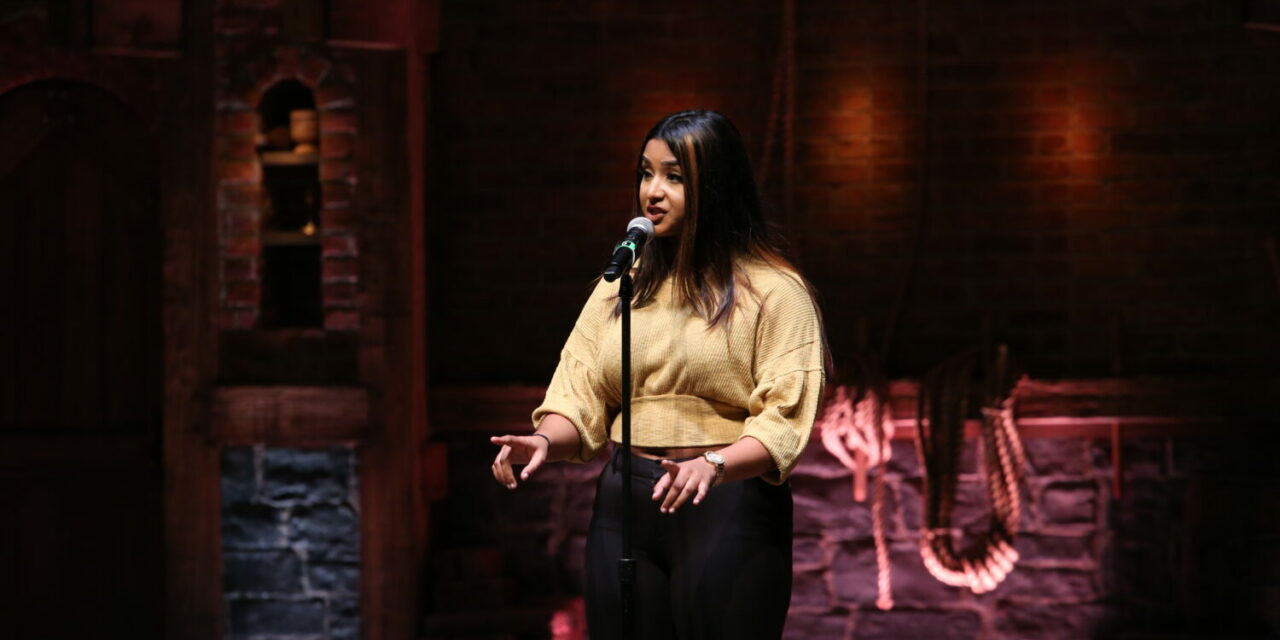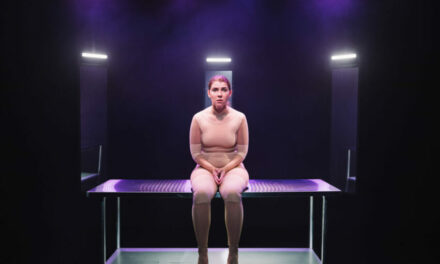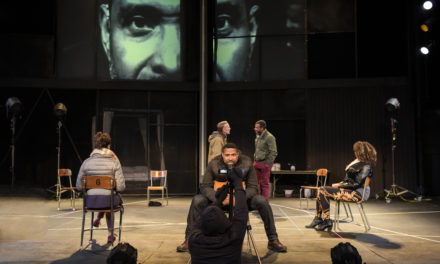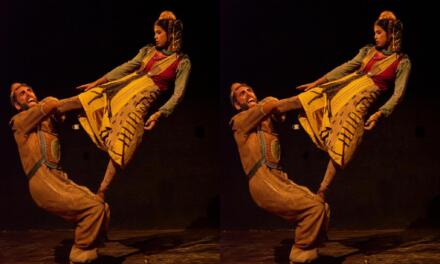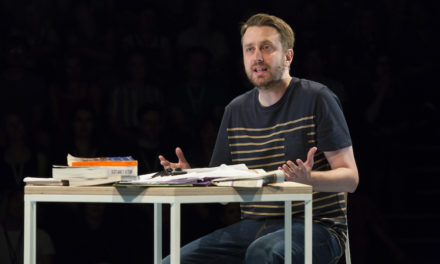Broadway’s Richard Rodgers Theatre is not only home to musical theatre sensation Hamilton but also host to the Hamilton Education Program (HEP). HEP is an educational initiative partnership between the show, the Gilder Lehrman Institute of American History, the Rockefeller Foundation, and the New York City Department of Education. Their most recent event held on Wednesday, March 20, saw 1,300 New York City high school students and teachers participate in a daylong program, culminating in a matinee performance of Hamilton. The morning program included a selection of student performances inspired by the show and by an integrated school curriculum devoted to Alexander Hamilton and the Founding Era, developed in partnership with Gilder Lehrman.
The student program included 10 student-scripted performances, ranging from solo spoken word pieces to songs with backing tracks. The unifying theme was their direct connection to the integrated curriculum, with topics billed as Alexander Hamilton Poem, Bill of Rights Rap, and Aaron Burr Rap. While the prospect of performing on a Broadway stage in front of a full house might have seemed daunting to even seasoned performers, these were New Yorkers and as such their comfort onstage was almost palpable. Among the varied acts was opener Seema Ramdat whose Civil Rights Spoken Word piece was a highlight. Her stature and evident ease were assets she deployed skillfully. Other standouts included Fazil Aydemir’s Aaron Burr Rap and Anthony Arlequin’s Alexander Hamilton Song. Ramdat declared that it was writing over performing that was her planned focus for the future. She also stated that she was a recent convert to musical theatre and that it was hip hop she grew up with in Queens, not Broadway.
Following the student program was a talkback featuring several performers from Hamilton, hosted by cast member Marc delaCruz. The actors answered several questions that had been selected from student submissions. In the middle of the talkback a young man in a hoodie and jeans appeared onstage and in the midst of the uproar, it was revealed to be none other than show creator Lin-Manuel Miranda. Miranda had just returned from Detroit, where he was overseeing the opening of a national tour production. It was enlightening to hear him discuss his commitment to performing arts in education, having previously been an educator. Miranda’s reconfiguration of Broadway theatre to include people of color center stage and the language of hip hop has enabled minority students to embrace his inclusive show like none they have likely seen or been aware of before.
After the talkback and before the matinee I had an opportunity to speak to James G. Basker, President of the Gilder Lehrman Institute and a Professor of Literary History at Columbia University’s Barnard College. Mr. Basker has been an educator for 40 years and proclaimed HEP “The most exciting educational program” of his career. He also stressed the importance of students and that “the future of the country depends on kids feeling like they have ownership.” He concluded that “History is the most important subject” and professed his faith in the youth of America and explained the genesis of the HEP program and its unique collaborative nature between Gilder Lehrman and the teachers who volunteered to integrate the Alexander Hamilton unit into their existing curriculum, a curriculum which Gilder Lehman was instrumental in creating.
The culmination of the day’s events was a matinee performance of Hamilton itself, which after opening in August of 2015 remains Broadway’s most coveted ticket. While Miranda is no longer a cast member his stamp is evident in the work he created, echoing his buoyant energy. The camaraderie he had with his fellow talkback panel members indicated he remains a source of inspiration and guidance. The show has justly enjoyed extensive media coverage and is clearly a most memorable theatrical experience. The show’s historical component provides an appeal that speaks to the increased popularity of the non-fiction narrative in literature, film, and television. The show’s basis in history also provides a bridge to European drama, which is more often historical in nature than American dramatic fare.
The show’s various elements meld into an engrossing, transportive whole set against David Korins’s spare and evocative sets. Costume design is the production’s most detailed component, earning Paul Tazewell a Tony Award for his vivid colors, sumptuous fabrics, and elaborate stitching. Lighting by Howell Binkley is effective and orchestrations by Alex Lacamoire lent another degree of historical verisimilitude while also welcoming the occasional detours into hip hop and other musical genres. The show also enjoys the work of synthesizer and drum programmer Randy Cohen. Finally, there’s the kinetic choreography of Andy Blankenbuehler and MVP director Thomas Kail, both Tony winners. The latter adroitly synthesizes the multitude of talents and components of the production. The sheer ambition of the show’s seemingly incompatible components is rendered gleefully irrelevant as the overall joy and mastery of the storytelling provide the necessary element of the transcendence of essential theatre.
Hamilton is that rarity, a sensation that is worthy of the hype, a gauntlet-throwing show whose impact is likely to only expand in the coming years.
Hamilton is currently playing at the Richard Rodgers Theatre, 226 W 46th Street in New York City.
This post was written by the author in their personal capacity.The opinions expressed in this article are the author’s own and do not reflect the view of The Theatre Times, their staff or collaborators.
This post was written by Jack Wernick.
The views expressed here belong to the author and do not necessarily reflect our views and opinions.

